Growing AAC Professionals: AAC-friendly Books
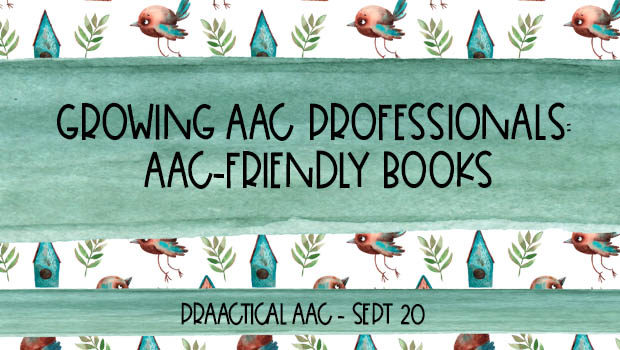
Today, we welcome back Vicki Haddix to these pages. Vicki is an AAC SLP who has had a variety of experiences and is currently a Clinical Assistant Professor at the University of Memphis. She joins us periodically to share some of the fine work that her graduate students. In today’s post, Vicki shares the work of students who created AAC-friendly books and other resources on important topics, like water safety.
You can learn more from Vicki and her students here.
Make sure to check out the link at the bottom to access the full array of materials that these talented students created.
Enjoy!
::::::::::::::::::::::::::::::::::::::::::::::::::::::::::::::::::::::::::::::::::::::::::::::::::::::::::::::::::
As a professor, it’s always exciting when you see the great work that graduate students are doing and think about the potential that they are bringing to the field. I’ve taught the AAC class at the University of Memphis’s SLP graduate program for 5 spring semesters. This was my first time teaching the class in a shorter summer semester, and my first time teaching it entirely online. While there were definitely some changes, I kept the final projects as they were.
When I designed the AAC course, I tried to incorporate elements of Universal Design for Learning (UDL) within the class. One of the elements I’m particularly proud of is allowing the students to choose their own final projects, which are worth 50% of their grade. I give them the following guidelines:
Your final project should:
- Collect information from a variety of sources (i.e.: not only a survey or only research articles);
- Ground itself within the field of AAC specifically and SLP generally (this may or may not take the form of a literature review);
- Explicitly state how the information in the project is important to SLPs and/or users of AAC and their families and;
- Be well organized.
I meet with each student, individually or in the pairs that chose to work together, to decide the project. The students check in with me as needed through the rest of the semester, and then present to each other about what they did on the final day of class.
While there is nothing in the guidelines I give them that says their project should be practical and ready to distribute to the AAC community, more and more projects over the years have gone in this direction. Which is great, and I think they deserve a wider audience. I hope PrAACtical AAC readers will agree with me and find these materials useful!
First up is the bilingual literacy project by Corey Fawcett and Payton Powers. For their project, they wanted to write a bilingual (Spanish-English) story book and they wanted to focus on encouraging comments. I suggested that they watch Jane Farrall’s excellent 2020 AAC in the Cloud keynote to delve further into the topic. This proved inspirational. Corey and Payton took what they learned and developed a bilingual hand out on literacy and shared reading for parents, as well as their charming story about a family’s day at the zoo. They put Spanish and English voiced versions on Tarheel Reader, and developed a bilingual communication board, and a PowerPoint cloze activity. You can also take a look at their presentation to the class about their book. They gave an overview of the research around bilingualism and literacy and how this impacted their vocabulary choices, like choosing a number of Spanish-English cognates.
-
- Tarheel Reader books – A Day at the Zoo/Un Día en el Zoo
Next, Monique Reed and Hannah Leflore were inspired by an ISAAC webinar on AAC for First Responders presented by Sharon Mankey and Mariesa Rang. While we discussed a number of options for projects when we met, Monique and Hannah ultimately decided that they wanted to create something for older students who use AAC. They collected some additional information on this subject when Hannah interviewed an EMT and they watched Kathryn Helland’s 2020 AAC in the Cloud presentation on Emergency Planning for AAC Users. They turned this into a Tarheel Reader book with Monique’s fantastic artwork. Their hope is that “this book can be used as a resource to introduce the conversation of emergency preparedness to young adolescents who use AAC devices. These conversations will leave them more equipped and confident to request services when the time is needed.”
Lastly, Shelby Adams had a personal inspiration for her project. Her mother runs a swim school, and Shelby is an instructor there. She has a young client who is an emergent AAC user, and loves the pool, but is not very safe around the water. Shelby wanted adapted resources around water safety and ways to use AAC to communicate with her client while they were in the pool. While she had Red Cross and other organization’s materials to adapt around water safety, she needed ideas around waterproof AAC. Conveniently, there was a 2020 AAC in Cloud presentation that addressed some of this: Endever* Corbin’s comprehensive presentation on AAC Backups helpfully included ideas about using AAC around the water. For her swim school client, Shelby is trying out a communication board with 16 symbols attached to a kick bar, so it can be near them wherever they are in the pool. Shelby also created a rhyming book in PowerPoint which talks about a swim lesson and water safety. To complement the book, she developed two handouts: one on water safety for families, and another that includes a communication board to use with her book, along with modeling suggestions.
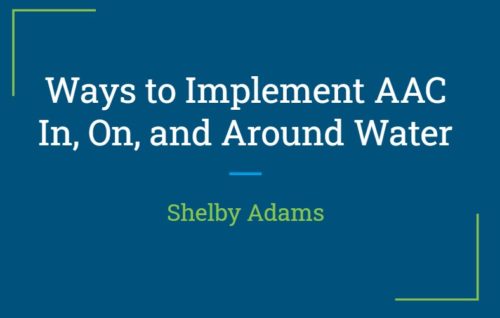
You can check out all of the materials mentioned above and get the links to the Tarheel Reader books in this Google Drive folder.
Filed under: Featured Posts, PrAACtical Thinking
Tagged With: Accessible Books & Materials, Bilingual AAC & Multilingualism, preservice training, Tarheel Reader
This post was written by Carole Zangari
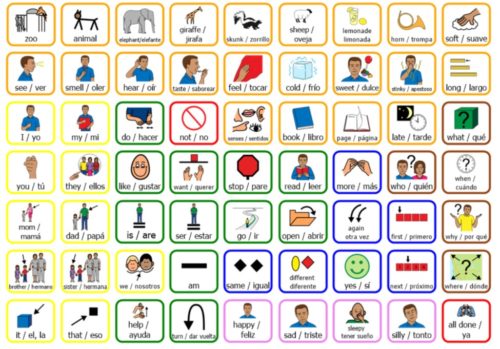
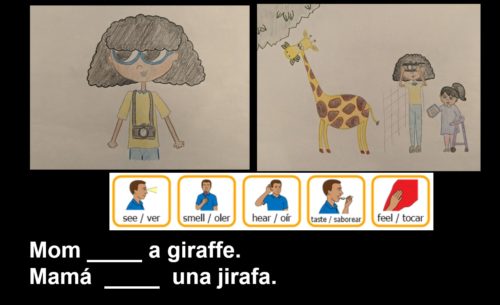
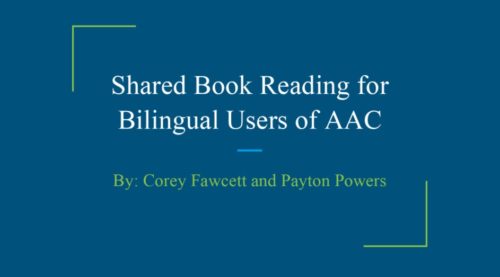
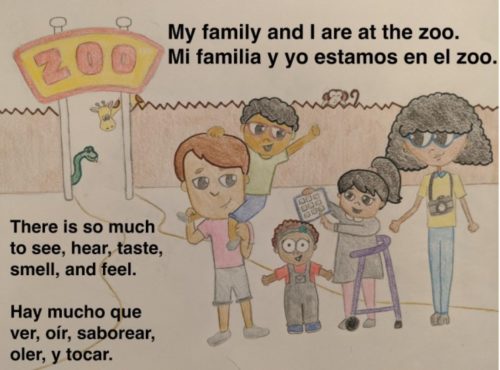
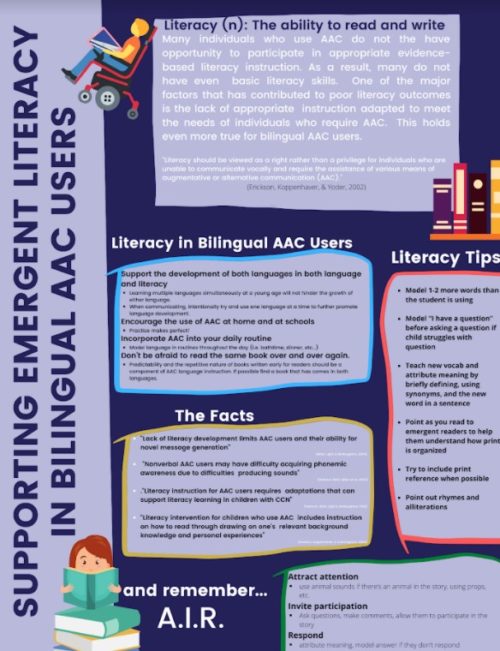
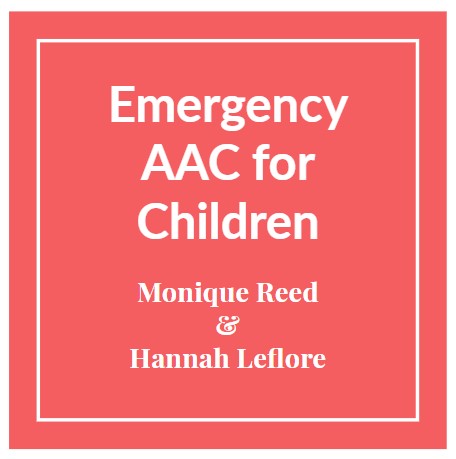


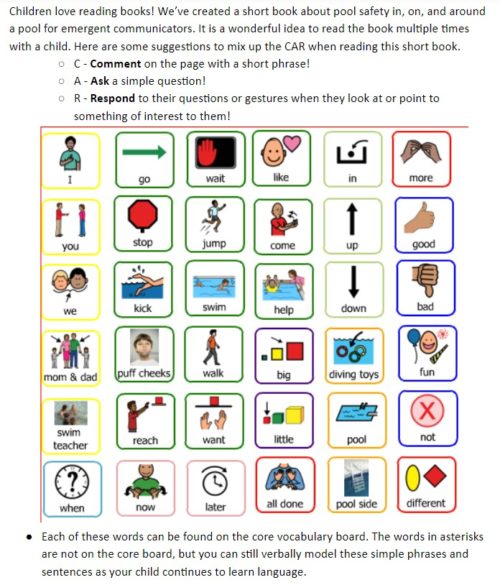


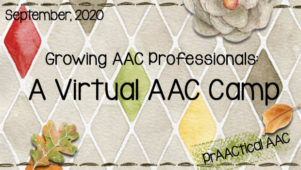
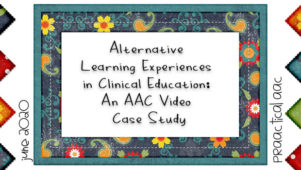
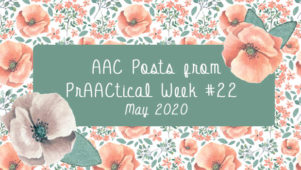
1 Comment
These are amazing, thorough, and creative! Kudos to your students and to you for pushing them to synthesize information, create, and pursue an area of passion.